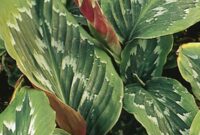Fertilizing a fig tree is important to promote healthy growth and maximize fruit production. Here are some general guidelines for fertilizing a fig tree:
1. Timing:
- Spring Application: Fertilizing your fig tree in the spring, just before new growth begins, is crucial. This timing aligns with the tree’s natural growth cycle. As the weather warms up, fig trees come out of dormancy and start producing new leaves and fruit buds. Fertilizing at this point provides the tree with the essential nutrients it needs for robust early-season growth.
- Early Summer Application: In addition to the spring application, it’s advisable to fertilize your fig tree again in early summer. This timing supports continued growth and fruit development. However, avoid late summer or fall fertilization, as it can encourage new growth that might not have sufficient time to harden off before winter, making the tree vulnerable to cold damage.
.
2. Type of Fertilizer:
- Balanced, Slow-Release Fertilizer: When choosing a fertilizer for your fig tree, opt for a balanced, slow-release formulation. These fertilizers are labeled with N-P-K ratios, such as 10-10-10 or 14-14-14, indicating the proportion of nitrogen (N), phosphorus (P), and potassium (K). Fig trees do not typically require high levels of nitrogen. Slow-release fertilizers provide a steady supply of nutrients over time, preventing over-fertilization and potential damage to the tree’s roots.
- Avoid High-Nitrogen Fertilizers: High-nitrogen fertilizers can promote excessive leafy growth at the expense of fruit production in fig trees. Since figs are primarily grown for their fruit, it’s essential to choose a fertilizer that does not encourage too much vegetative growth.
- Organic Alternatives: If you prefer organic methods, you can use well-rotted compost, aged manure, or organic granular fertilizers. These organic options provide a slow-release source of nutrients and can be beneficial for fig trees without the risk of overloading them with nitrogen.
.
3. Application Method:
- Even Distribution: When applying fertilizer to your fig tree, it’s crucial to spread it evenly around the base of the tree. This ensures that nutrients are delivered uniformly to the root zone, where the tree can absorb them effectively. Uneven distribution can lead to uneven growth and fruit development.
- Avoid Trunk Contact: Be careful not to let the fertilizer come into direct contact with the tree’s trunk. Fertilizer in direct contact with the trunk can cause damage or burn the tree’s bark. Maintain a gap of a few inches between the fertilizer and the base of the tree.
.
4. Mulch:
- Organic Mulch: After applying fertilizer, it’s advisable to spread a layer of organic mulch around the base of your fig tree. Organic mulch materials can include wood chips, straw, leaves, or compost. Mulch serves several important functions:
- Moisture Retention: Mulch helps to retain soil moisture by reducing evaporation. This is especially beneficial in hot and dry climates or during periods of drought. Consistent soil moisture is essential for healthy fig tree growth.
- Weed Suppression: Mulch acts as a barrier to weed growth, preventing unwanted plants from competing with your fig tree for nutrients and water. Weeds can rob the soil of essential resources and should be kept in check.
- Temperature Regulation: Mulch also helps regulate soil temperature by insulating the root zone. It keeps the soil cooler in hot weather and provides some protection from extreme temperature fluctuations.
- Organic Matter Addition: Over time, organic mulch breaks down and adds organic matter to the soil, improving its structure and fertility.
- Proper Mulch Depth: Apply a layer of mulch approximately 2 to 4 inches (5 to 10 centimeters) deep. Ensure that the mulch does not touch the tree’s trunk, leaving a small gap around it to prevent moisture-related issues and rodent damage.
.
5. Watering:
- Consistent Moisture: Adequate watering is essential for the health of your fig tree. Fig trees prefer consistently moist soil but not waterlogged conditions. During the growing season, monitor the soil moisture regularly and ensure that the root zone remains consistently damp, especially during dry spells.
- Deep Watering: When you water, it’s important to apply water deeply. This encourages the fig tree’s roots to grow deeper into the soil, making the tree more resilient to drought conditions. Shallow watering may result in shallow root growth, making the tree more susceptible to stress.
- Avoid Wetting Foliage: When watering, try to keep the foliage dry. Wet foliage can be prone to diseases, so direct your watering efforts toward the base of the tree or use a soaker hose or drip irrigation system.
.
6. Additional Nutrients:
- Soil Testing: To determine if your fig tree requires additional nutrients beyond what’s provided by regular fertilization, consider conducting a soil test. A soil test can pinpoint specific nutrient deficiencies or imbalances, allowing you to tailor your nutrient supplementation accordingly.
- Common Deficiencies: Fig trees can sometimes exhibit specific nutrient deficiencies. For example, magnesium deficiency can result in yellowing between leaf veins, while zinc deficiency may cause smaller and distorted leaves. Identifying these issues through a soil test can help you select the right supplements.
- Micronutrient Amendments: If a soil test indicates specific micronutrient deficiencies, you can address them by applying targeted amendments. These may include products containing magnesium, zinc, or other micronutrients. Always follow the recommended application rates on the product label.
- Organic Supplements: If you prefer organic gardening methods, seek organic supplements that can rectify nutrient deficiencies. These could include organic sources of the deficient micronutrients or amendments like compost or composted manure.
.
7. Organic Fertilizers:
- Natural Nutrient Sources: Organic fertilizers for fig trees are derived from natural sources and provide a slow-release supply of nutrients. These can include well-rotted compost, aged manure, bone meal, fish meal, and kelp meal, among others. These organic options contribute to soil health and enhance nutrient availability to the fig tree.
- Balanced Formulations: Look for organic fertilizers with balanced N-P-K ratios to ensure that your fig tree receives the right nutrients without excessive nitrogen. Organic fertilizers release nutrients gradually as they break down, reducing the risk of over-fertilization.
- Soil Improvement: Organic fertilizers not only provide essential nutrients but also improve soil structure and microbial activity. They increase the soil’s ability to retain moisture and nutrients, promoting overall soil health and fig tree growth.
- Sustainable and Environmentally Friendly: Organic fertilizers align with sustainable gardening practices and have minimal environmental impact. They encourage natural processes in the soil and reduce the risk of chemical runoff into waterways.
.
8. Monitoring:
- Regular Inspection: Consistent monitoring of your fig tree’s health is essential. Regularly inspect the tree for any signs of stress, disease, or nutrient deficiencies. Look for symptoms such as yellowing leaves, stunted growth, or pest damage.
- Seasonal Assessment: Pay attention to your fig tree’s performance throughout the growing season. Monitor the development of leaves, fruit, and branches. Keep a close eye on fruit production, as this is a crucial indicator of the tree’s overall health and response to fertilization.
- Soil Testing: Periodically conduct soil tests to assess nutrient levels and pH. Soil tests provide valuable insights into your fig tree’s nutrient requirements and can guide your fertilization strategy. Soil tests are particularly useful when determining the need for additional nutrients or pH adjustments.
- Adjustments as Needed: Based on your monitoring findings and soil test results, be prepared to make adjustments to your fig tree care routine. This might involve fine-tuning your fertilization schedule, amending the soil with specific nutrients, or addressing any pest or disease issues promptly.
Remember that the specific fertilizer needs of your fig tree can vary depending on factors such as soil type, climate, and the age of the tree.
It’s a good practice to perform a soil test to get a better understanding of your tree’s specific nutrient requirements. Additionally, avoid over-fertilizing, as this can lead to excessive vegetative growth and reduced fruit production.



